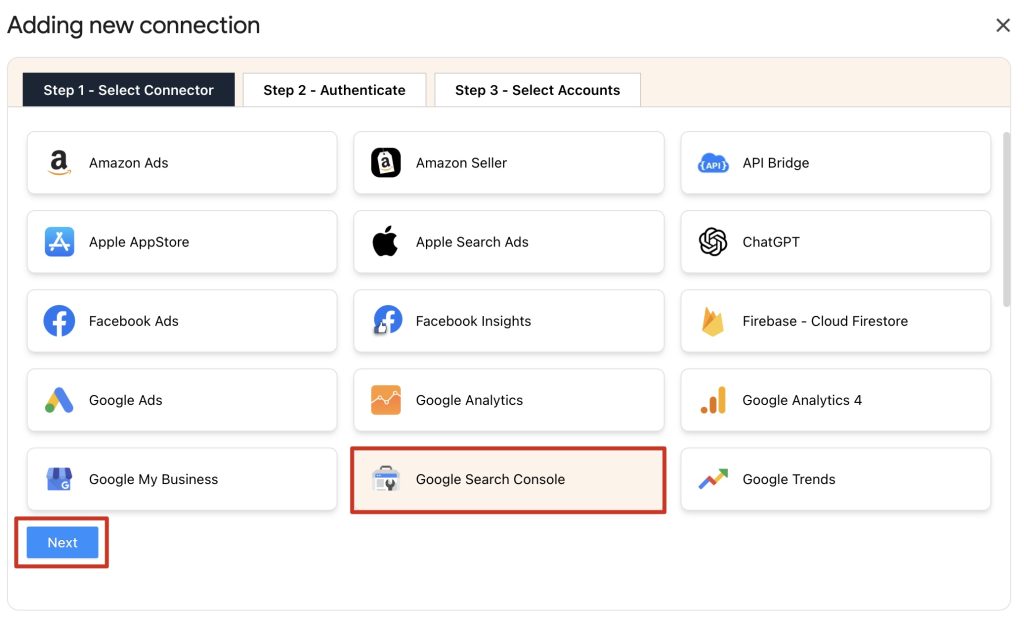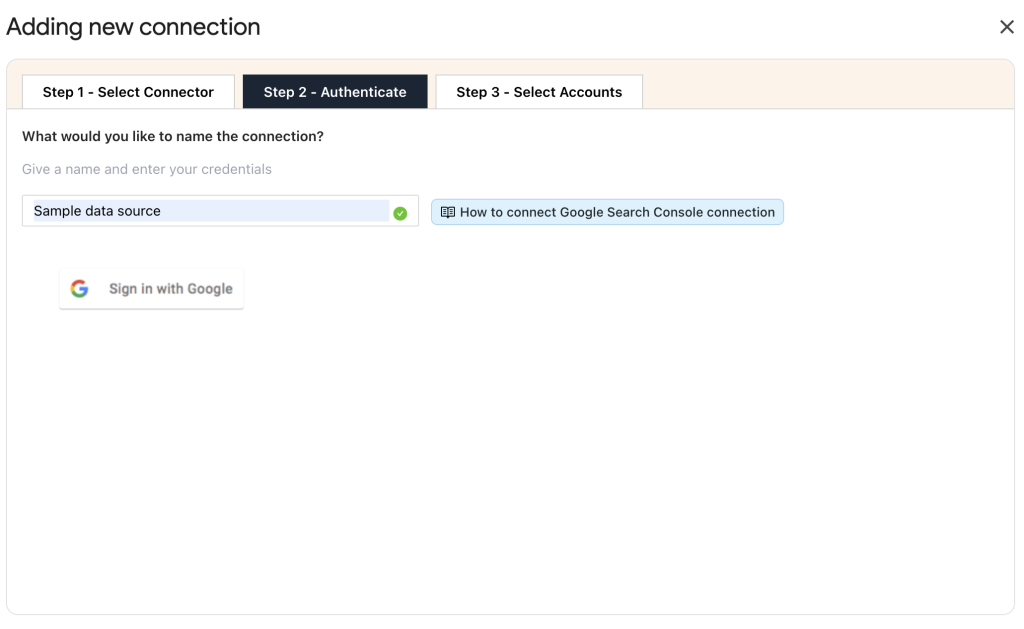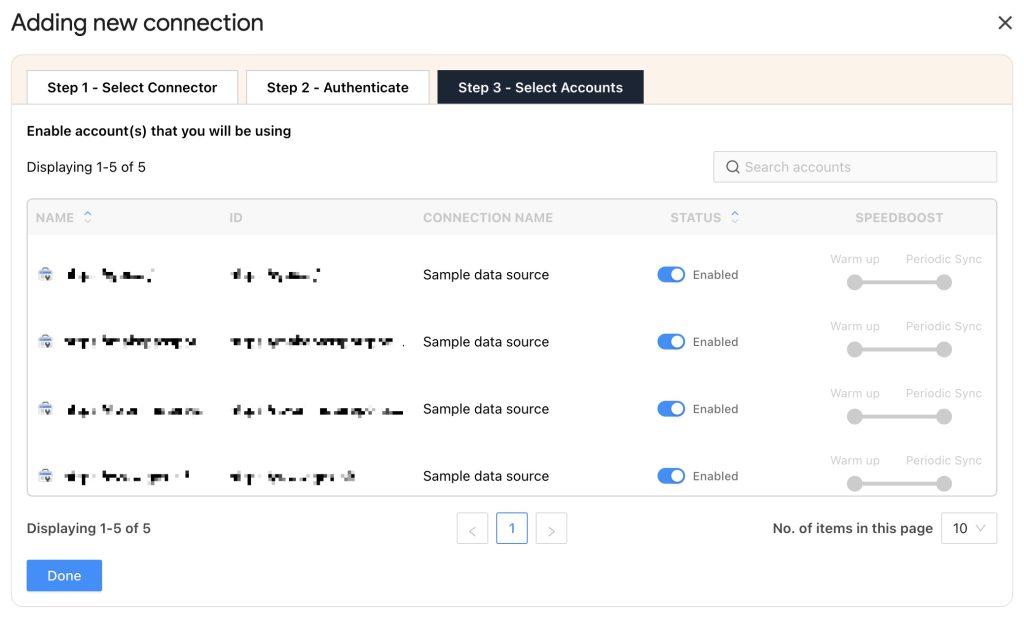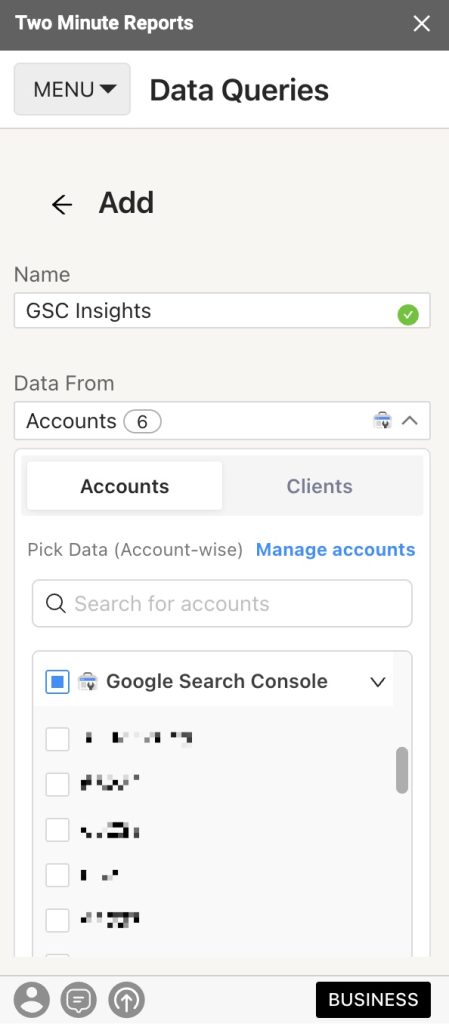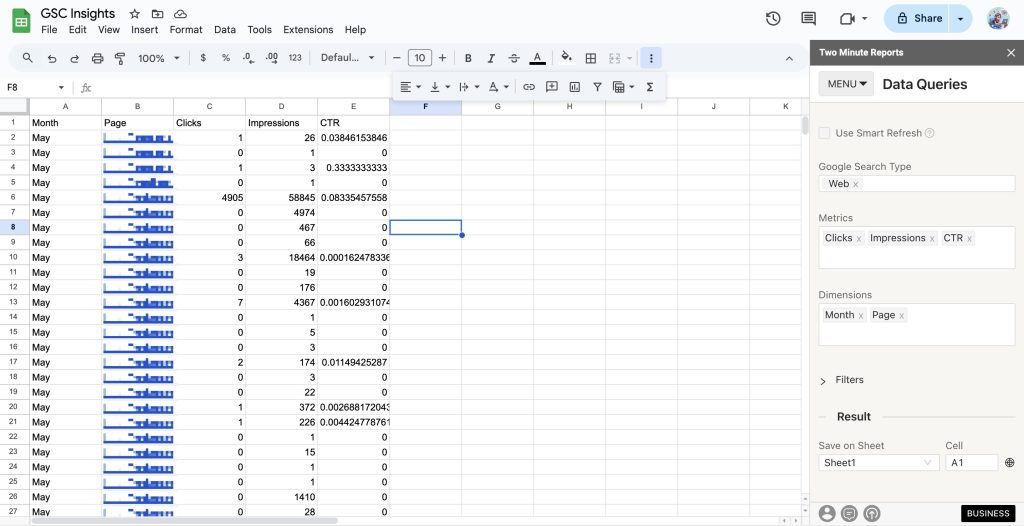Are your Google Search Console (GSC) reports set in stone? With Two Minute Reports’ GSC connector, you can visualize your SEO performance instantly in Google Sheets with zero hassle. Before connecting your GSC data to Google Sheets, please ensure you have the following permissions:
Required permissions
To use the GSC connector, users must meet the following requirements:
- The user must add and verify their property in Google Search Console. Only verified properties will be available for use with TMR’s GSC connector.
- The “Owner” or “Full User” roles have access to the search performance data. Only the Owner can promote other users to the “Full User” role.
- Users with the “Owner” or “Full User” access can authenticate using the Google Flow login. After authentication, the Connector will display the verified properties available to the user.
Once you confirm these prerequisites, follow the steps below to connect your Google Search Console data to Google Sheets using TMR.
Step 1: Install and launch Two Minute Reports
Begin by installing TMR in Google Sheets using this step-by-step tutorial: How to install TMR in Google Sheets?
Once done, you can connect your Google Search Console account to extract website performance data into Google Sheets.
Step 2: Create a new Connection to your Google Search Console account
Click Menu at the top left of the sidebar to navigate to the Connections section. Next, click Add to create a new Connection.
When the “Adding New Connection” dialog box appears, complete the following three key steps to access your Google Search Console accounts:
- Selecting the Google Search Console Connector
- Authenticate your account
- Enable the respective accounts with the Google Search Console Connector
Choose Google Search Console from the list of options, and authorize your Connection by entering your login credentials.
After successful authentication, you will see a screen showing your Account name, ID, Connection name, and Status as shown below:
Enable the toggle for the accounts you want to run queries. Please note that you cannot extract data from disabled accounts.
| To reflect the connected accounts in the TMR sidebar, click “Refresh Connections.” |
Now, you can extract Google Search Console KPIs into Google Sheets for actionable SEO performance insights.
Step 3: Fetching Google Search Console data to Google Sheets
- You must create a new query by navigating to the Data Queries section to extract specific Google Search Console data.
- Click Add and choose the Google Search Console accounts you want to analyze.
- You can manage multiple clients’ Google Search Console accounts from one interface. Simply select one or more accounts to obtain actionable SEO insights.
- Alternatively, you can navigate to the Clients section to add your clients and map their corresponding Google Search Console accounts.
- Click on “Manage Clients” and map the necessary account details. Then click “Save & Close” to save your client’s information for future reference.
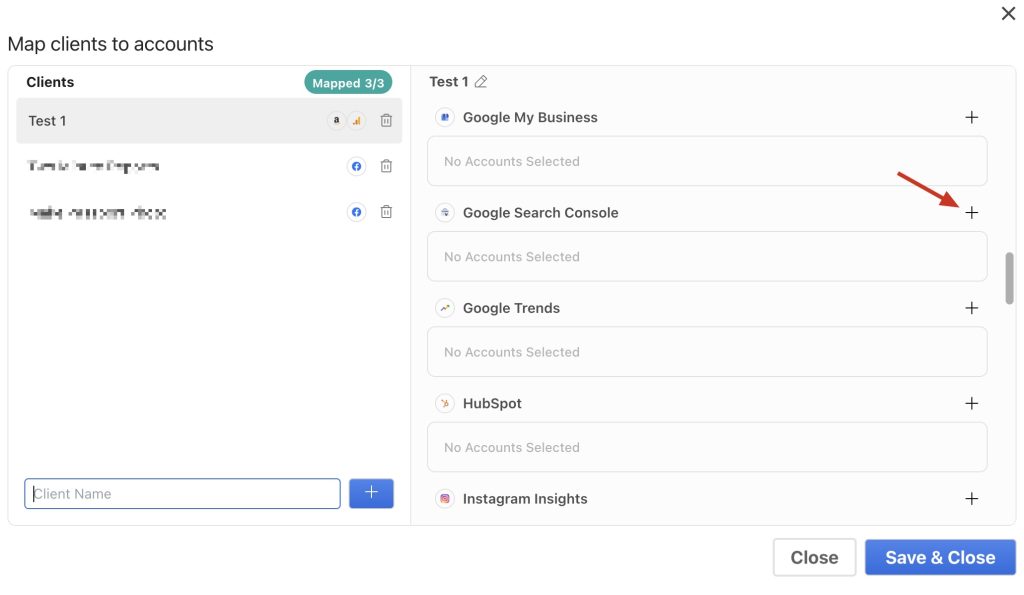
Next, select the report type you want to analyze in Google Sheets. With GSC, you can generate the following three reports:
- Analytics Report
- URL Inspection Report
- Sitemaps Report
Analytics Report:
This report provides detailed insights into your site’s organic search traffic, helping you to better optimize visibility and performance. Select the custom date range and input the metrics and dimensions to track your SEO efforts.
Once done, click Run Query to visualize the output.
Similarly, you can inspect multiple URLs on your website and review the status and processing details of your submitted XML sitemaps. Choose your preferred report from the Report Type dropdown and measure the results accordingly.
Step 4: (Optional) Get automatic data updates via Schedule Refresh
Once you create a report in Google Sheets, you can schedule automatic updates to get updated data. This feature is convenient for sending emails, refreshing your spreadsheets with live data, and using them as a dashboard.
Under the email section, you can enter the recipient’s email ID and save the new schedule.
You can also choose to specify the reporting format. You can insert the sheet content in the email body, attach the selected sheet as a PDF or Excel, or attach the spreadsheet as an Excel file.
Two Minute Reports’ Schedule Refresh feature has further capabilities. Continue reading about this feature: “How to Refresh Data Automatically in Google Sheets.”
We hope you found this guide helpful. If you have any questions, please contact our support team at [email protected].
